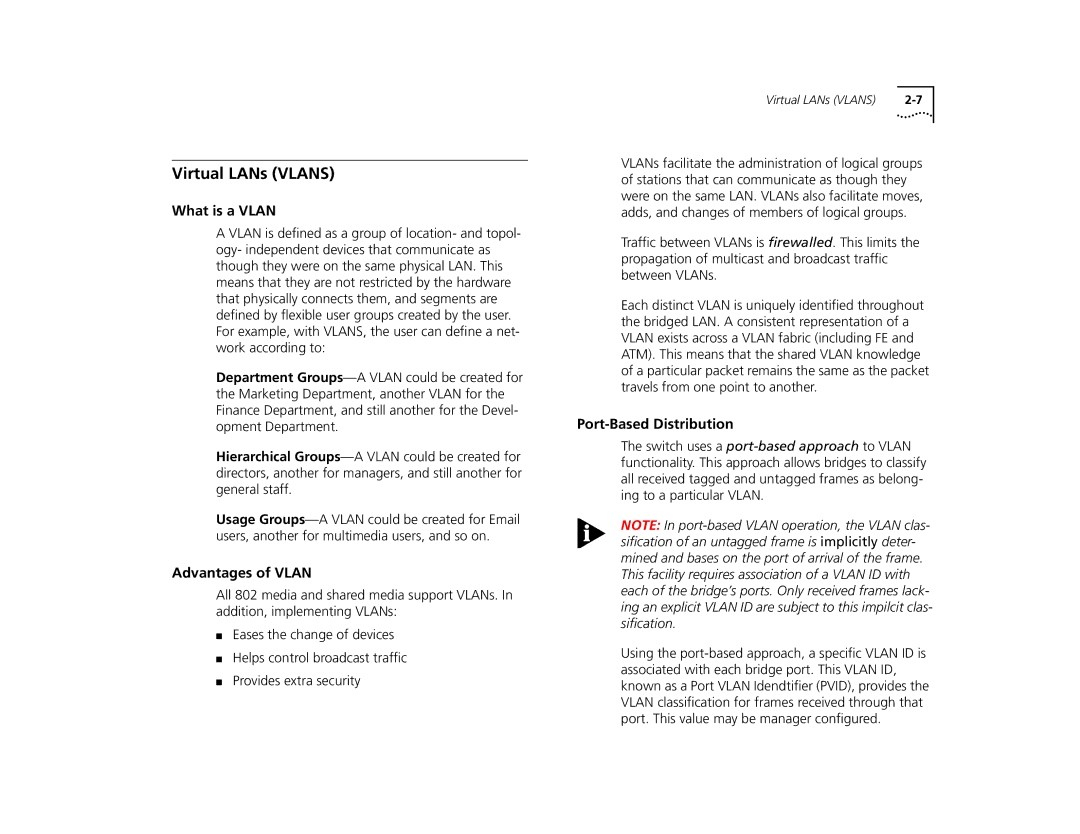
Virtual LANs (VLANS)
What is a VLAN
A VLAN is defined as a group of location- and topol- ogy- independent devices that communicate as though they were on the same physical LAN. This means that they are not restricted by the hardware that physically connects them, and segments are defined by flexible user groups created by the user. For example, with VLANS, the user can define a net- work according to:
Department
Hierarchical
Usage
Advantages of VLAN
All 802 media and shared media support VLANs. In addition, implementing VLANs:
■Eases the change of devices
■Helps control broadcast traffic
■Provides extra security
Virtual LANs (VLANS) |
VLANs facilitate the administration of logical groups of stations that can communicate as though they were on the same LAN. VLANs also facilitate moves, adds, and changes of members of logical groups.
Traffic between VLANs is firewalled. This limits the propagation of multicast and broadcast traffic between VLANs.
Each distinct VLAN is uniquely identified throughout the bridged LAN. A consistent representation of a VLAN exists across a VLAN fabric (including FE and ATM). This means that the shared VLAN knowledge of a particular packet remains the same as the packet travels from one point to another.
Port-Based Distribution
The switch uses a
NOTE: In
Using the
